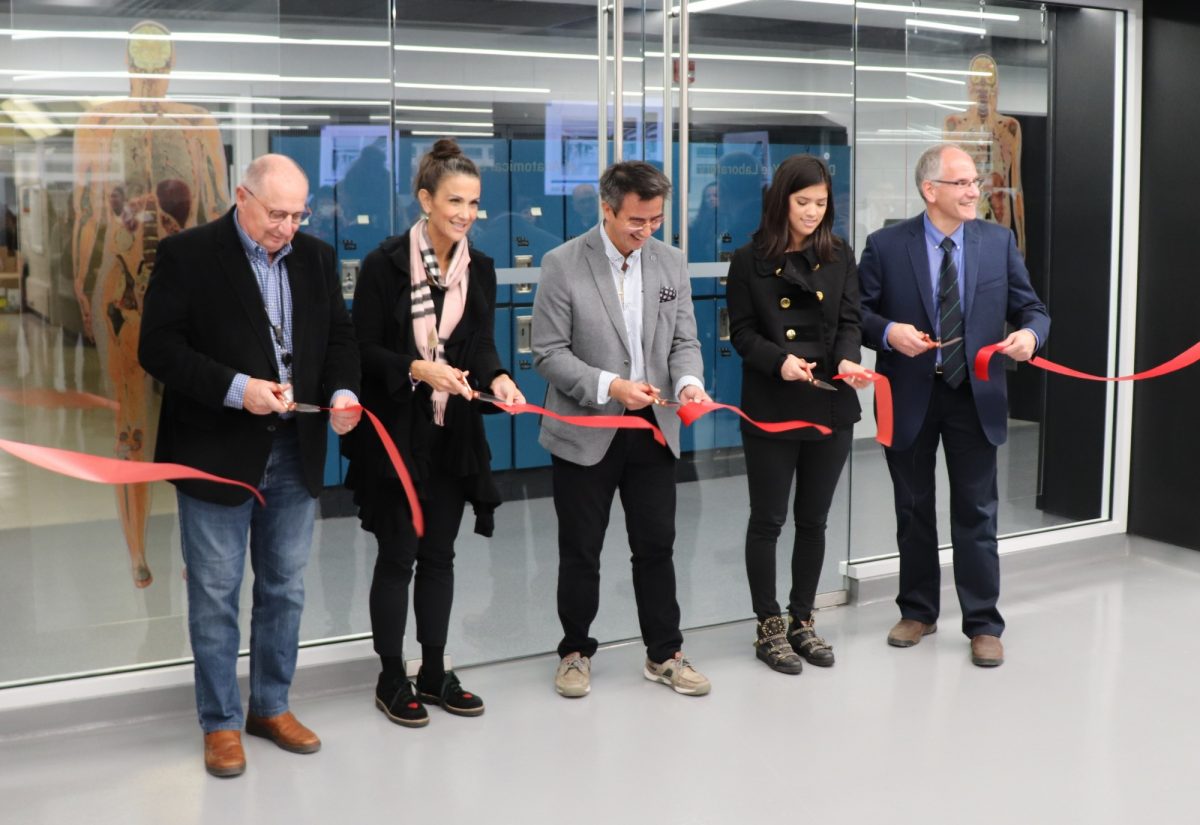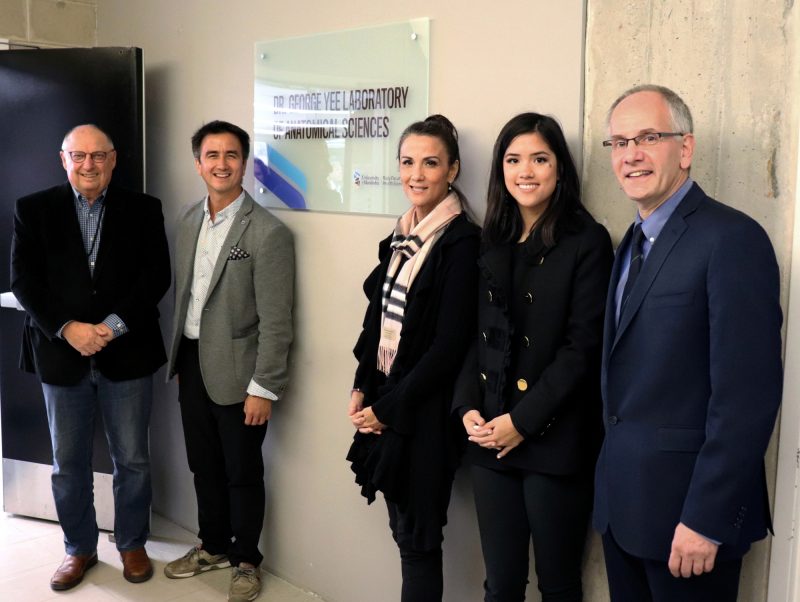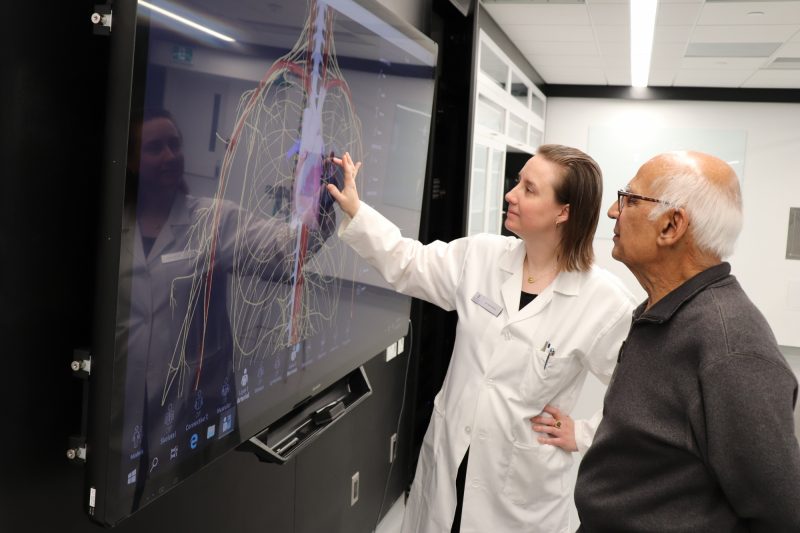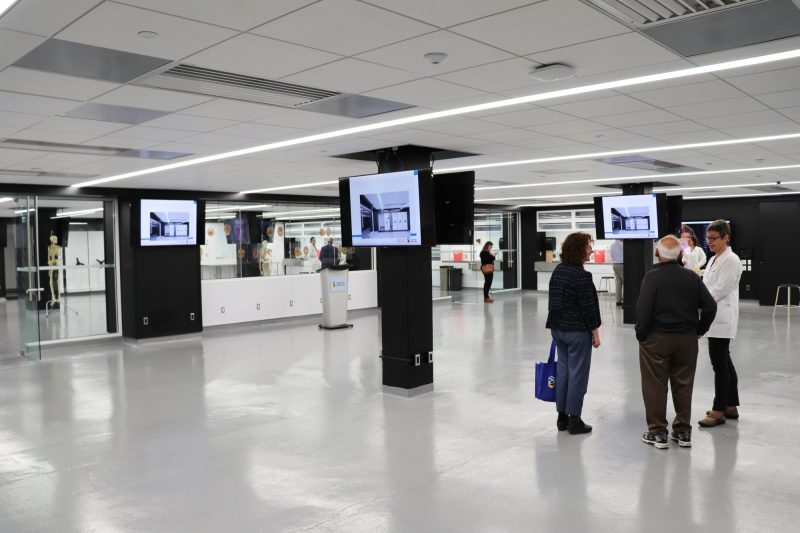
(From left to right) Dr. Brian Postl, Dr. Lauren Yee, Dr. Charles Yee, Charlotte Tan and Dr. Thomas Klonisch officially open the Dr. George Yee Laboratory of Anatomical Sciences.
Dr. George Yee Laboratory of Anatomical Sciences opens
The state-of-the-art Dr. George Yee Laboratory of Anatomical Sciences opened October 18 on the Bannatyne campus ushering in a new era of how human anatomy will be studied.
The $4.3 million renovation gives students and faculty in the Rady Faculty of Health Sciences a modern facility boasting high fidelity screens, 3D capabilities and interactive tools from which to learn the intricacies of the human body.
The renovation project was kickstarted by a $500,000 donation from Dr. George Yee, who donated the money to the project before he passed away in 2014. The 1960 MD alumnus was a celebrated pathologist and philanthropist.
Dr. Brian Postl, dean of the Rady Faculty of Health Sciences, said the project was prompted by Yee’s donation, which led the Rady Faculty to find ways to raise additional funds to build the world-class facility.
“We are extremely thankful for the generosity of Dr. George and Fay Yee. Dr. Yee was a remarkable gentleman,” Postl said. “This is a wonderful facility to be named after him.”

(From left to right) Dr. Brian Postl, Dr. Charles Yee, Dr. Lauren Yee, Charlotte Tan and Dr. Thomas Klonisch.
George Yee’s son, Dr. Charles Yee, his daughter, Dr. Lauren Yee, and his granddaughter, Charlotte Tan, attended the opening event.
“My dad was very grateful for the opportunity that this institution provided him,” Charles Yee said. “The University of Manitoba Faculty of Medicine opened his eyes to the world and I’m glad to see after today, touring the cutting-edge technology of this centre, that this tradition continues.”
Dr. Thomas Klonisch, head of the department of human anatomy and cell science, spearheaded the project to replace the dated gross anatomy lab, used primarily by medical students.
The new laboratory, located in the basement of the Basic Medical Sciences Building, is bright and spacious. There are three large rooms, lined with windows and glass doors that gives the space a wide-open feeling.
The lab, which will be used by hundreds of students each year from all five of the Rady Faculty of Health Sciences’ colleges, is equipped with a powerful ventilation system and a cutting edge
audio visual system. TVs throughout the laboratory can display specimen, videos or presentations. There are also large touchscreens that students can use to navigate 3D anatomy modelling programs.
One of the areas is equipped with surgical operating room lights. Klonisch said that they can shoot video of a dissection taking place in the lab and show it live in a lecture theatre to students.
“It’s an enormous transformation,” Klonisch said. “We’ve entered the 21st century with this architectural marvel symbolizing the importance of what we do.”
The former gross anatomy lab space was more than 40 years old, Klonisch said, and had leaky taps, old equipment and hadn’t been updated in decades.
Klonisch said the U of M is one of only two Canadian universities where anatomy facilities have been completely revamped in recent years. With the renovated lab, he said it allows the

The lab includes large touchscreens that students can use to navigate 3D anatomy modelling programs.
university to expand anatomy courses and collaborations with clinical departments, host national meetings and provide companies with adequate space to present new surgical tools.
The Yees have a long history of philanthropy at the University of Manitoba. In 2008, Dr. George and Fay Yee provided a $2.5 million gift to establish the George & Fay Yee Centre for Healthcare Innovation at the U of M, a place that fosters interdisciplinary research and collaboration that has resulted in new ways to improve patient care and safety. It is now a more than $20-million enterprise in partnership with the WRHA.
“George Yee’s dedication to his alma mater is extraordinary,” Postl said. He matched his classmates’ gifts to the University of Manitoba Class of 1960 Entrance Scholarship in Medicine. To honour his parents’ memory, he established the Charles and Pauline Yee Bursary in Medicine at the University of Manitoba.
In total, George and Fay Yee have contributed more than $3.3 million to the University of Manitoba, illustrating a commitment to Yee’s alma mater, medical education and medical student support.








Thank you for this excellent account of a major event in the history of our Department of Human Anatomy and Cell Science. It was attended by both clinicians and basic scientists, who seemed delighted by the combination of new technology with an old and fundamental topic of study in medical science!
Fantastic facility. It should help bring students and practitioners (back) to Winnipeg. Thanks for telling the story.